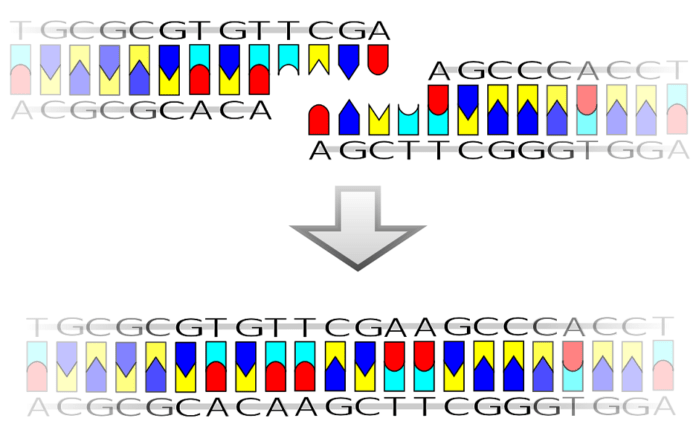RNA ligases play an important role in RNA repair, thereby maintaining RNA integrity. Any malfunction in RNA repair in humans seems to be associated with diseases like neurodegeneration and cancer. Discovery of a novel human protein (C12orf29 on chromosome 12) as an RNA ligase, therefore, has relevance in development of novel treatments for such diseases. Researchers have proposed to name this protein as Homo sapiens RNA ligase (HsRnl).
Ligase is an enzyme that catalyses the joining or ligation of two nucleic acid molecules typically via hydrolysis. For example, DNA ligase facilitates joining of DNA strands by catalysing formation of phosphodiester bond thereby playing a key role maintaining genome integrity during the process of DNA replication, recombination and repair throughout the life span of the organism. Similarly, RNA ligase catalyses the formation of phosphodiester bonds between 3′-OH and 5′-P groups of RNA molecules. It, therefore, plays a key role in RNA repair and maintaining cellular fitness.
The discovery of C12orf29 happened while identifying AMPylated (Adenosine Mono Phosphorylated) proteins via chemical proteomics approach1. AMPylation involves covalent attachment of AMP to protein side chains via phosphodiester bonds in which ATP acts as a co-substrate. The protein is 37 kDa in size and consists of 325 amino acids. Surprisingly, it is highly conserved in higher eukaryotes but absent in lower eukaryotes such as yeast. Functional analysis showed that it possessed 5’-3’ RNA ligase activity. Mutational analysis revealed that changes in certain residues referring to mutations D59N, R77L, E123D, and K263N were found in patients suffering from esophageal squamous cell carcinoma, glioblastoma, chronic lymphocytic leukemia, and ovarian serous cystadenocarcinoma respectively. All the above 3 mutations except E123D lead to impaired RNA ligation.
Knock out of C12orf29 in HEK293 (human embryonic kidney) cells leads to vulnerability of cells towards reactive oxygen species suggesting that this protein plays an important role in repairing damaged RNA caused by the generation of reactive oxygen species1. Identification of this novel protein, named HsRnl (Homo sapiens RNA ligase), has several implications in the development of novel therapeutics as impairment of RNA repair in humans is associated with the onset of several diseases such as neurodegeneration and cancer2, 3.
***
References:
- Yuan Y., et al 2022. A human RNA ligase that operates via auto- and RNA-AMPylation. bioRxiv preprint. Posted 19 August 2022. DOI: https://doi.org/10.1101/2022.07.18.500566
- Burroughs A. M. & Aravind L. RNA damage in biological conflicts and the diversity of responding RNA repair systems. Nucleic Acids Res. 44, 8525-8555 (2016). https://doi.org/10.1093/nar/gkw722
- Yan, L. L. & Zahner, H. S. How do cells cope with RNA damage and its consequences? J. Biol. Chem. 294, 15158-15171 (2019). DOI: https://doi.org/10.1074/jbc.REV119.006513
***




































